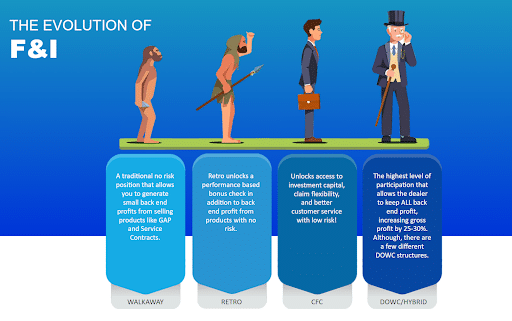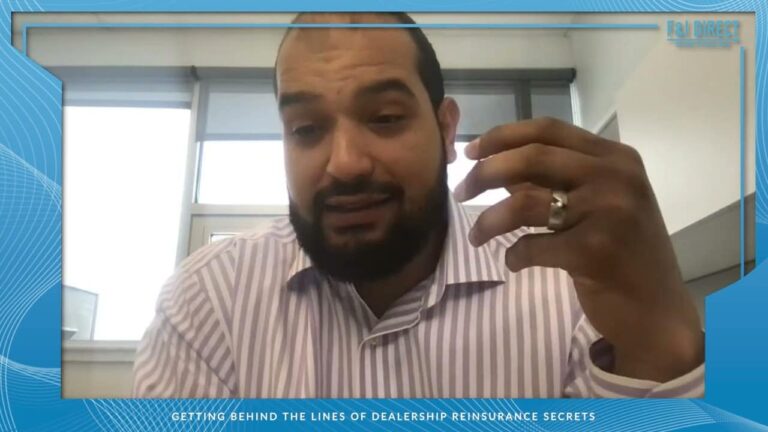 Most of the time, F&I managers from dealerships put the customer’s needs first, always looking for low interest car loans. Unfortunately, customer’s don’t see it that way. On a survey conducted, asking automotive customers, “Which dealership employee do you feel is most interested in serving your interests, rather than the dealerships interest?”. Sad to say, only 5% of respondent answered aF&I managers and the majority answered sales people. At Kia dealership, 8.2% of customers says that F&I managers put their customer’s interest first.
Most of the time, F&I managers from dealerships put the customer’s needs first, always looking for low interest car loans. Unfortunately, customer’s don’t see it that way. On a survey conducted, asking automotive customers, “Which dealership employee do you feel is most interested in serving your interests, rather than the dealerships interest?”. Sad to say, only 5% of respondent answered aF&I managers and the majority answered sales people. At Kia dealership, 8.2% of customers says that F&I managers put their customer’s interest first.
F&I managers only interact with customers close to the end of the buying process is part of the reason why customers don’t see their value and possibly coming off as someone who’s trying to sell something for the dealership’s benefit. With customers pushing back, the need to juggle several highly stressful responsibilities with long hours led to a high turnover of 38% F&I managers leaving their jobs in 2015.
INCREASE YOUR F&I DEPARTMENT’S INCOME: F&I Managers responsibilities evolve
With customers increasingly walking into dealerships armed with the knowledge of the make, model and competitive pricing, dealership sales team don’t have much room for negotiation, and this results in smaller profit margins. The next way for dealerships to make a profit is through F&I, and puts pressure on managers to sell their other services, financing and insurance. Sometimes, sales people also take on financing, which leaves F&I managers to make their profits add-on products, which makes F&I managers stressful and can be intrusive on customer’s experience.
INCREASING CUSTOMER SATISFACTION:
F&I managers needs to understand the customer’s needs and figure out the best option that best works. If a customer doesn’t feel that their needs are being met and doesn’t get a positive experience, they might end up financing through their bank instead and refuse other services being offered by the F&I team. Convincing customers to get their financing through the dealership is vital, this creates vital relationship between customers and dealerships; Customers who finance through dealerships are more likely to buy from the same dealership than handling the same balance on their own, which leads to long-term repeat buyers.
MAINTAINING COMPLIANCE:
Other than bringing in more money for dealerships and meeting the needs of their customers; And making sure that they’re satisfied; F&I managers also experience constant stress in making sure that customers’ deals are transparent. Regulators like Federal Trade Commission, Consumer Financial Protection Bureau and state attorneys general keeps dealerships’ F&I under scrutiny.
RESTRUCTURING OF COMPENSATION AND WORKLOAD:
F&I managers feel overworked because of juggling the above responsibilities, that leads to high turnover rates. A dealership in Texas found a solution to fight turnover by decreasing compensation; Yes, you read it correctly! The pay structure switched from all-commission for finance managers to salary plus bonuses. Finance managers now make $7,000 to $8,000 a month compared to the previous $12,000 to $13,000 a month. Their salary may have decreased, but they get more time off. Productivity has increased due to a better work-life balance. Dealers who adapted to the new compensation saw the benefits of a more engaged employee while decreasing the variable cost – margins tightened and the race to finding great talents increased.
F&I managers have a critical role in automotive dealerships. While sales people make the official sales, customers wouldn’t be able to drive off with their new car without the assistance of F&I managers. By changing the payment structure, reducing work hours and having a lower stress environment, dealerships increase F&I manager employee satisfaction and retention rates.
department




